Why Power BI and Power Apps integration is the ultimate combo🚀
Imagine you have a big box of LEGOs, and you want to build a whole LEGO town—from picking out the pieces, building the houses, to decorating them and even setting up a little park.
From 1 single block of lego to an entire town- that’s kind of how we’d like to paint a picture of “End-to-end digital transformation”. It means using technology to improve everything in your store – all in one smooth system helping your business to work smarter.
One tool that helps us facilitate this technology is using a powerful tool like Power BI with Power Apps for stronger integration.
Let’s break it down below:
Power BI with Power Apps Integration: A Game-Changer for Businesses
Power BI joined with Power Apps will put you at a competitive advantage over others because it offers a unique data-driven decision-making and workflow automation solution that most standalone analytics tools cannot provide.
Here’s a breakdown of why this combination is special and differentiates itself from other software solutions:
Key Points of Power apps integration within Power BI
Integrating Power Apps and Power BI together enhances traditional data visualization by enabling real-time data interaction and modification within the same platform.
This integration allows users to take immediate actions on insights by embedding PowerApps directly into Power BI reports.
This effectively turns Power BI from a read-only analytics tool into an interactive decision-making platform.
Let’s explore why this combination is special and differentiates itself from other software solutions:
-
Data-Driven actionability
-
Low-Code Customization & Development
-
Unified Microsoft Ecosystem & Security
-
AI-Powered Insights with Business Process Automation
1. Data-Driven Actionability
Power BI with Power apps allows users to take action directly from dashboards.
Power Apps bridges the gap between analytics and operational execution, something other BI solutions will require third-party integrations for, more hassle.
-
Example: A retail manager at Mango sees low stock levels in a Power BI report, and instead of switching to another system, orders new stock directly from the dashboard using an embedded Power App.
-
Low-Code Customization & Development
Power Apps enables users to build and deploy custom applications without extensive coding knowledge, making it ideal for businesses looking for agility.
This differentiation reduces IT dependency enabling business users to self-serve and innovate faster.
-
Example: An HR team member at Toast Box wants to create a leave request system. Instead of troubling the IT team, they can embed a leave request form in Power BI, where managers can approve requests instantly.
-
Unified Microsoft Ecosystem & Security
As Power BI is a Microsoft product and part of the Microsoft Power Platform universe, Power BI and Power Apps integrate seamlessly with other Microsoft products, such as: Azure, Office 365, Dynamics 365, SharePoint, Teams, and Dataverse.
Other software will require third-party connectors to achieve this level of integration. Microsoft’s security and compliance models are of a high standard, ensuring data consistency and protection.
-
Example: A finance manager at Lexus can securely pull real-time data from Microsoft Dynamics 365 and approve payments within the same Power BI dashboard via a Power App.
-
AI-Powered insights with Business Process Automation
Power BI’s AI capabilities can detect patterns, forecast trends, and suggest future actions. Power BI and Power Apps combine predictive analytics with automated decision-making to act on insights instantly.
-
Example: Kase logistics, a freight company can predict delays using Power BI’s AI and trigger an automated response in Power Apps to re-route shipments in real time.
So when the question is…when should I use both Power apps with Power BI or just Power BI alone?
Let’s break down the 2 options below:
When should just use Power BI
Power BI is ideal for businesses focused on analytics, reporting, and cost efficiency without the need for real-time workflow actions.
This acts as a powerful data visualization tool for tracking trends, monitoring performance, and making strategic decisions.
If your business doesn’t require interactive and automated processes, you may find Power BI alone sufficient for your needs.
-
Example: A retail chain tracking sales performance across stores without needing to take direct action within the dashboard.
Conclusion: If your business only requires data insights without interactive actions or automation, Power BI alone is sufficient.
When you should use Power BI with Power apps
If you would appreciate low-code customization to make decisions in real-time along with analytical automation, integrating Power Apps with Power BI is worth a try.
Your business can execute and make moves directly within dashboards, reducing delays and improving efficiency.
-
Example: A logistics company that tracks shipments in Power BI and uses Power Apps to update delivery statuses, send alerts, or reassign routes—all in one place.


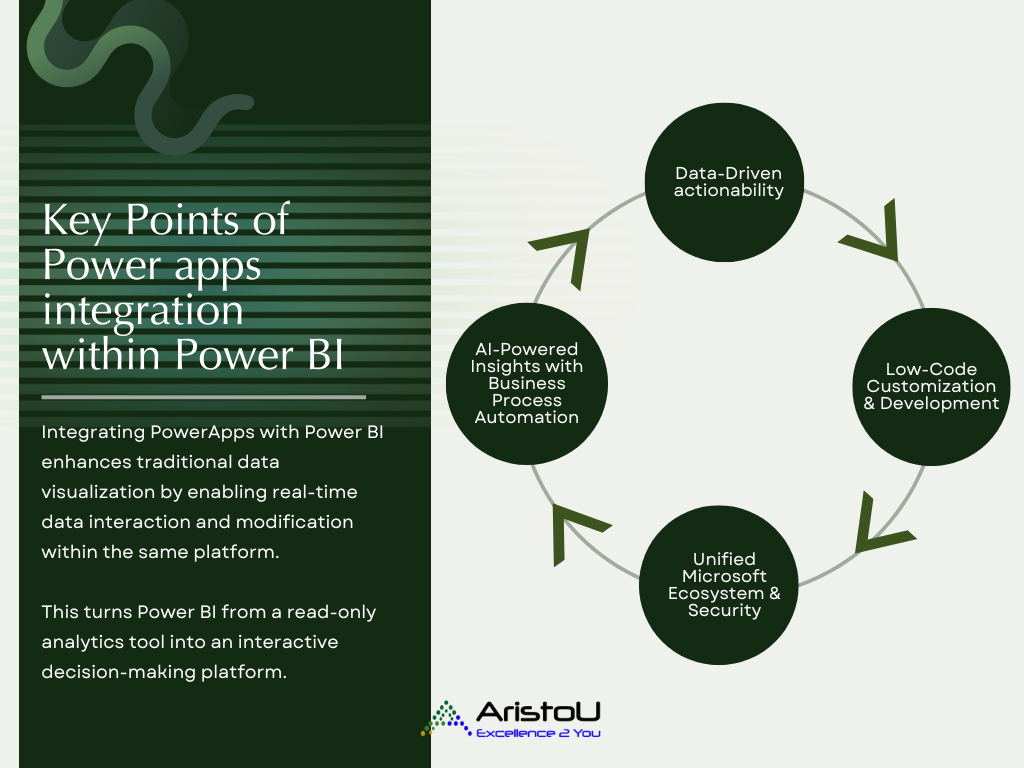
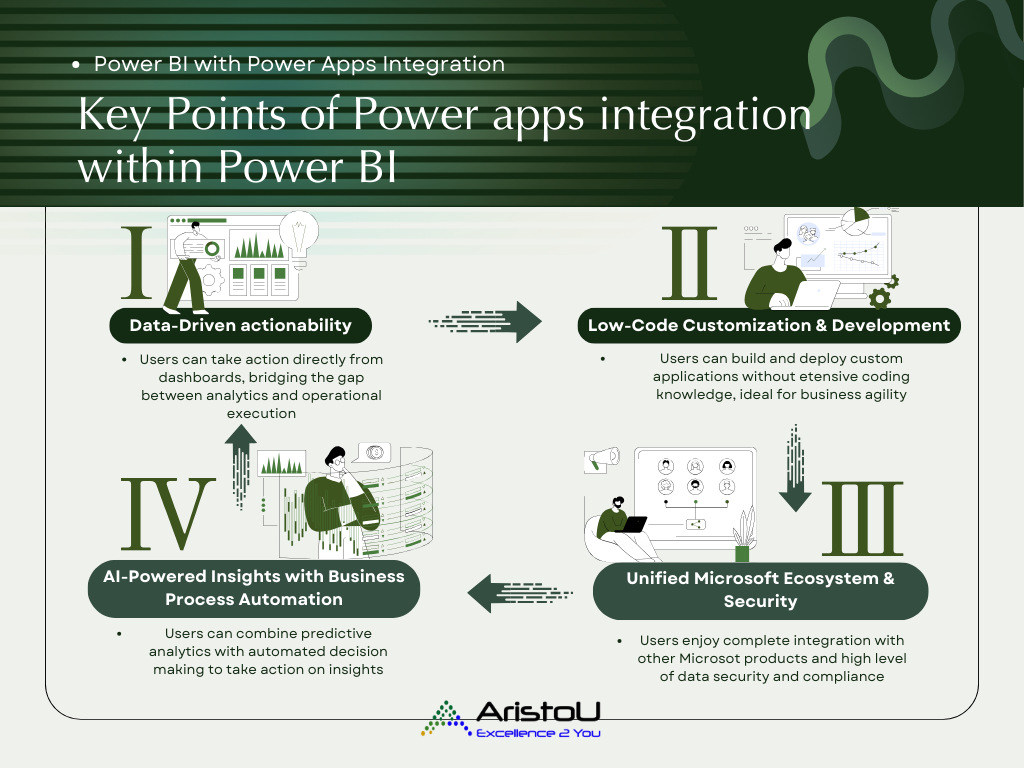
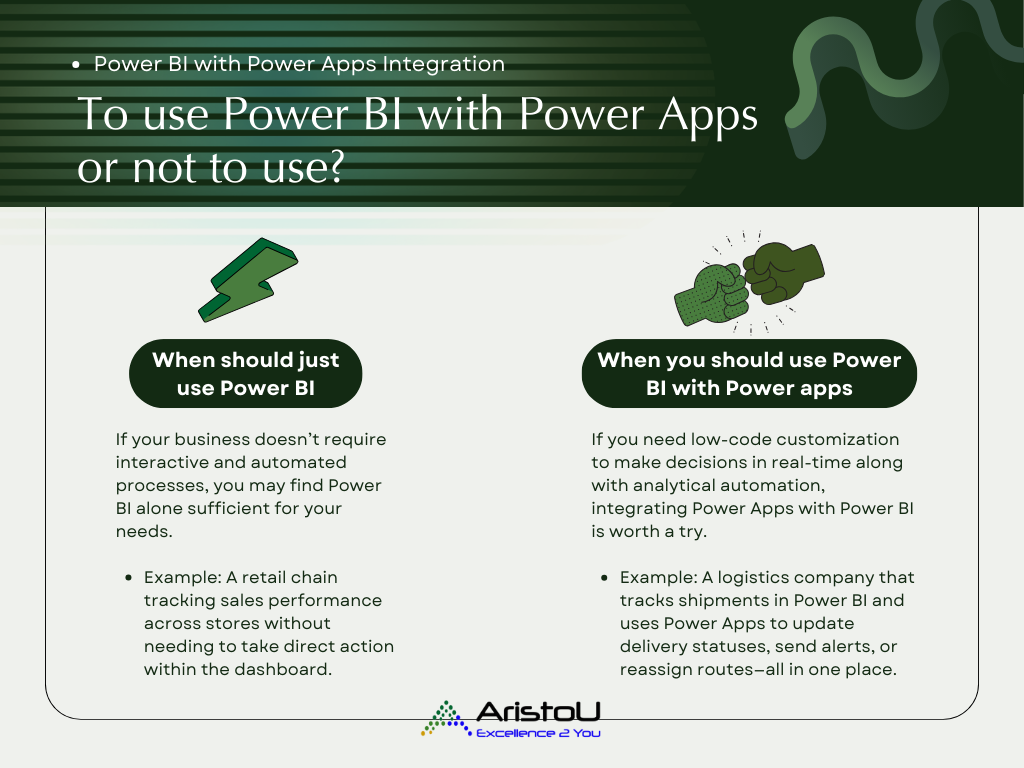
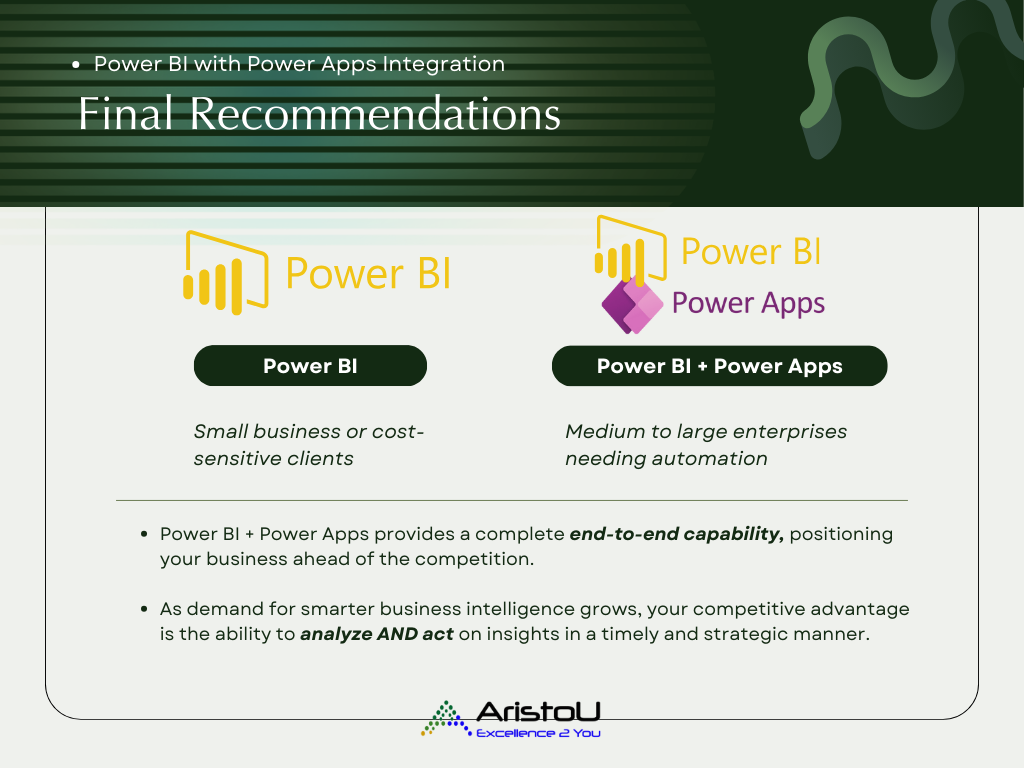
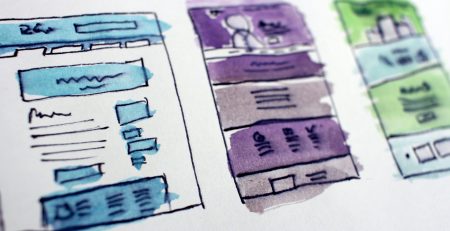

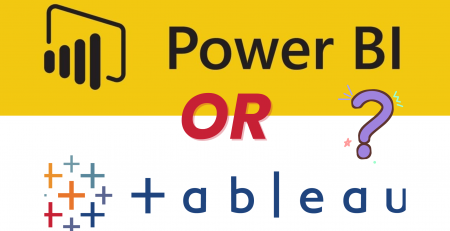




Leave a Reply